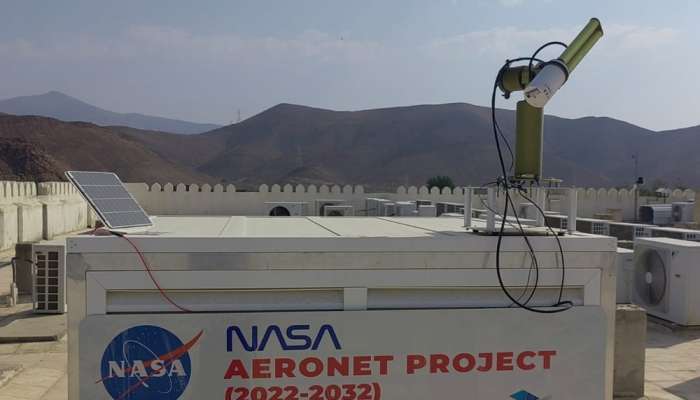
Nizwa: Nizwa University, in collaboration with Oman’s Environment Authority and the U.S. space agency NASA and other international research centres, has launched a study titled "Initial Study of Column-Integrated Aerosol Optical Properties over Birkat Al Mouz, Sultanate of Oman."
The study used precise optical measurements to analyse aerosols over Birkat Al Mouz, yielding important results in understanding the dynamics of dust and its regional sources.
Professor Ahmed Suleiman Al Harrasi, Deputy Vice-Chancellor of Nizwa University for Graduate Studies, Research, and External Relations, and the study's supervisor, said the research was conducted in collaboration with NASA's Goddard Space Flight Centre, the U.S. National Centre for Atmospheric Research (NCAR), the Indian Institute of Technology in Bhubaneswar (IIT Bhubaneswar), and the Civil Aviation Authority (CAA).
He explained that the study focuses on analysing seasonal dust patterns, measuring the radiative effect of aerosols, and monitoring long-distance dust transport. This provides crucial scientific data to support climate change assessments, public health planning, and environmental management.
Dr. Biju Daniel, an atmospheric science researcher and project supervisor, noted that the team relied on data collected by a global AERONET network sun photometer located on the Nizwa University campus from December 2022 to November 2024. The analyses included aerosol optical depth (AOD), Angstrom exponent, single-scattering albedo (SSA), and radiative effects. They also used Concentration-Weighted Trajectory (CWT) analysis to identify dust sources.
Dr. Mohammed bin Saif Al Kalbani, Director General of Environmental Compliance at the Environment Authority and a participant in the study, said the results showed the highest dust concentrations occur during the summer, while the lowest levels are in winter.
The study identified the Horn of Africa, the Arabian Peninsula, and parts of the Indian subcontinent as key sources of dust during the summer. It also revealed that dust cools the Earth's surface by blocking sunlight while simultaneously warming the upper layers of the atmosphere by trapping energy, which impacts local and regional weather.
Al Kalbani explained that the study's findings have direct practical implications for Oman, including air quality management, environmental and public health protection, agricultural production, and the efficiency of renewable energy sources.
This reinforces the commitment to Omani policies, laws, and regulations related to environmental protection in general and air quality in particular. He also highlighted the integrated role of the Environment Authority and Nizwa University, in collaboration with NASA and other global partners.
This cooperation not only enriches scientific knowledge but also supports the implementation of Oman Vision 2040 and the strategic objectives of its Environment and Natural Resources priority, especially those related to achieving high-quality, pollution-free environments and the sustainable use of natural resources to harmonize economic, social, and environmental development.